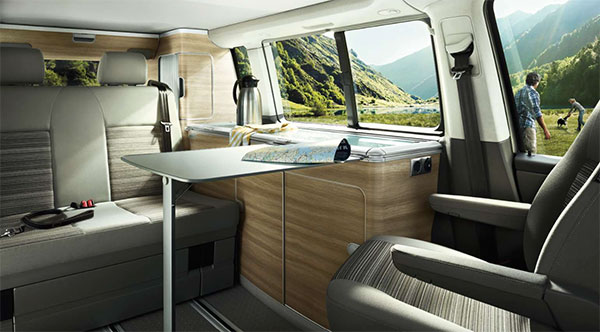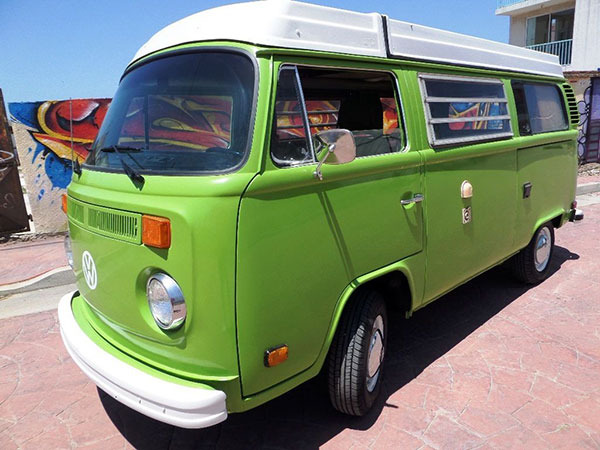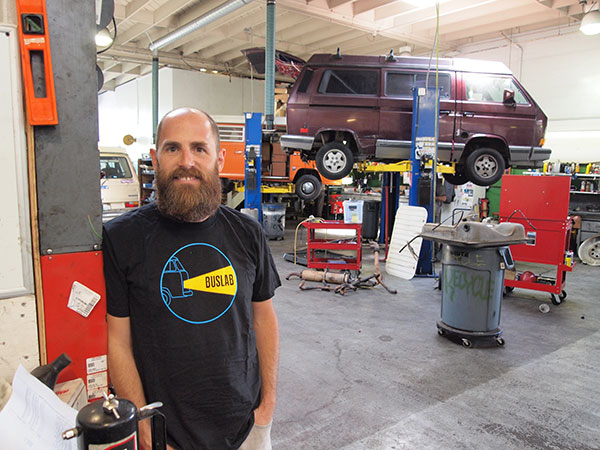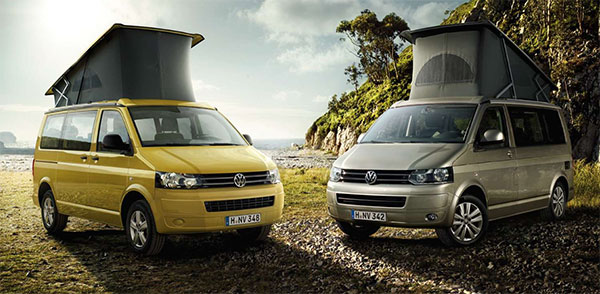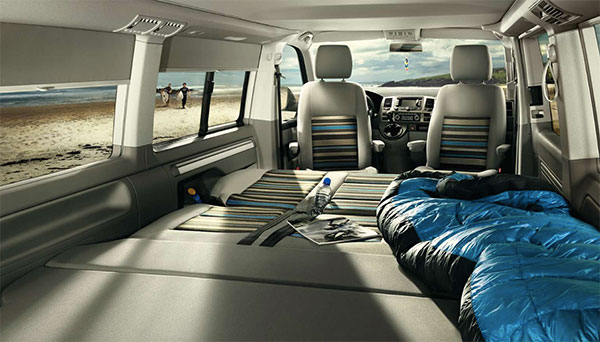Earlier this month, Volkswagen’s European-based commercial division announced the sixth-generation of its California camper van. It’s a slick seven-seat passenger vehicle that sleeps up to five people. The California is equipped standard with a manual pop-up roof, and configurations to accommodate reclining benches, an ice box, and twin-hob gas cookers.
What? The storied tradition of the VW camper bus—established with the famous Type 2 bus in 1950 and which ran through 1991 in the form of the Vanagon—continues unabated in Europe? The California model, only for Europe, was introduced in 1988. According to VW, every new generation of the model grows in popularity, with the previous fifth-generation selling more than 50,000 vehicles.
Back in the U.S.A.
Nope, the California is not sold in North America. But that doesn’t mean that the magic of the VW camper bus has in any way subsided in the United States. In fact, it’s grown. The same spell that was cast on Americans seeking freedom in the 1960s is still in play—but based on the repair and restoration of classic VW buses.
“Volkswagen vans intersected with the 1960s cultural revolution, California surf culture, and with the American family vacation,” explained Tom Turrentine, an automotive anthropologist at the University of California at Davis. He lives in Santa Cruz, a haven for VW buses. “It was just a box on wheels, and very underpowered. But it connects with people taking to the road, going to festivals or camping, and getting outdoors, away from cities.” He also lauded the ease of repairing their simple engines.
Even with the advent of much more capable automotive technology, the simple VW van—with all its shortcomings—keeps its appeal, especially to a certain type of motorist. “There’s a guy down the street from me who drives a 1964 camper. It sat in a field for years, where it was riddled with 100 bullet holes,” said Turrentine. “But he restored it, and drove around that carcass with bullet holes. I just love that.”
Picking Up Momentum
Steve Perzan, the co-owner of The Buslab in Berkeley, Calif. agrees that the original engine on the VW Type 2 is lacking in certain ways, by modern standards. “It’s part of the charm, or we convince ourselves that it’s part of the charm,” he told me. “Nobody seems to mind. These cars are about taking your time, and not messing with the rigmarole of regular life. It’s about the feeling of unwinding.”
Besides, if you really want to increase a Vanagon’s 83 or 92 horsepower engine, The Buslab will upgrade the vehicle to a modern 2.2-liter 135-horsepower Subaru engine that offers Japanese reliability.
That’s only the beginning of the engineering work that that The Buslab does. Wondering through its labyrinthine grounds, it felt like part repair shop and part shrine. The Buslab makes its own parts, and sources new parts from more than 40 suppliers around the world. Perzan explained that companies are starting to remanufacture parts and accessories that haven’t been made in 10 years. “This is definitely not a dying breed. It’s flourishing,” he said. Interest in restoration is growing because VW buses have gone up in value over the past decade.
Perzan praised the model for its configurability and practicality. He said that VW buses are the same length as a conventional car—great for parking—while including beds, stoves and refrigerators. He said that he has camped with many of his customers. “There’s such a community around them,” he said. “And such a feeling of adventure you can get from them. Just being a part of making that happen for other people is very rewarding.”
The New Model
The restored VW camper van thrives in California—just as the new California is being reinvented in Europe. Westphalia was bought by Daimler in 2001, so VW now directly equips the model as a camper.
Not only does it have a modern TDI diesel engine capable of about 37 miles per gallon, it comes with upscale options for app-based infotainment, dimmable LED lighting, advances safety systems like adaptive cruise control and automatic braking, multi-level sleeping arrangements, and a pop-up roof operated by electrohydraulic power controlled by the press of a button.
These modern features are definitely cool. But it makes you wonder if the charm of the classic VW bus—its simplicity, ease of repair, and take-your-time attitude—will never be supplanted by newer models, no matter much high-tech wizardry they might offer.


